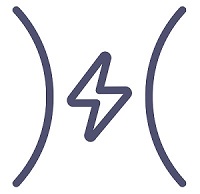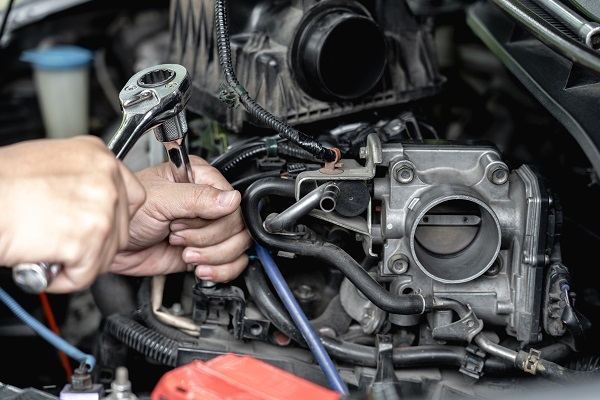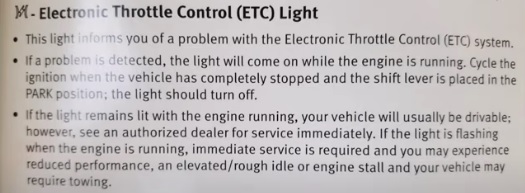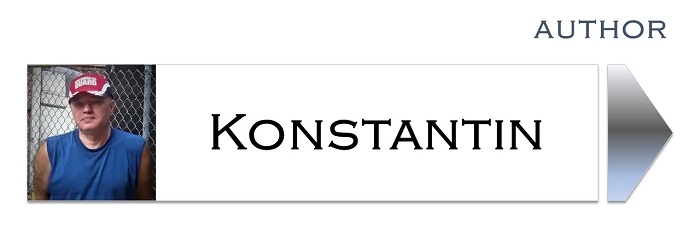![]()
Electronic Throttle Control Light [Red Lightning Bolt]
DISCLAIMER: AS AN AMAZON ASSOCIATE I EARN FROM QUALIFYING PURCHASES. THIS POST CONTAINS AFFILIATE LINKS THAT WILL REWARD ME MONETARILY OR OTHERWISE WHEN YOU USE THEM TO MAKE QUALIFYING PURCHASES. FOR MORE INFORMATION, PLEASE READ MY EARNINGS DISCLAIMER.
|
If you notice that you have started to drive slower than usual, it is very likely that you are having a problem with the electronic throttle control system. When the throttle fault light comes on, it is very important to determine the cause of the problem.
Check to see if the light is blinking or steady. If it is blinking, this means that there is something wrong with the electronic throttle control system. If the light is steady, there may be a problem with the sensor.
This is how your warning light will look like (it’s an inverted parenthesis with a lightning bolt):

Throttle fault lights alert drivers when there is a problem with the throttle. If the throttle fault light comes ON, there may be a problem with the throttle valve, which restricts the flow of air to your engine.
If the throttle valve is damaged, do not drive your vehicle until you have your system checked by a qualified technician. Pull over as soon as it is safe to do so, apply the parking brake, and shut off the engine.
Here is how you check the throttle valve:
- Step 1. With the engine off, push and hold the accelerator pedal to the floor.
- Step 2. Turn the ignition switch ON (do not release the accelerator pedal).
The throttle valve should move, indicating that the idle speed is controlled by the throttle valve. If the throttle valve does not move or only moves slightly, the idle speed is not adjusted properly.
If your vehicle has a Throttle Position Sensor (TPS), and the throttle fault light is ON, there may be a problem with the throttle position sensor. Have your vehicle serviced as soon as possible, especially if you notice that the engine is idling too fast or too slow.
Other possible causes of the Throttle Fault Light:
- The idle Air Control valve may not be fully closed, causing the throttle valve to remain open.
- The idle Air Control motor may not be operating properly.
To address any of these situations, it is important to take note of when exactly the problem occurs:
- If the light comes on while driving at high speeds, this may be an indication that your electronic throttle control system is faulty and needs to be replaced.
- If the light comes on at low speeds, there may be a problem with your throttle cable. You should have your electronic throttle control system inspected to find out if the problem lies with the ECU or with a different component of your vehicle.
This is what your engine throttle valve looks like:

The warning sign:

And some repair instructions:
ETC problems
Interference from the outside can cause power spikes or short circuits in Electronic Throttle Control System. If an electronic control system detects a problem, its power output is zeroed until the problem is fixed and the system is reset.
If the interference persists, drivers will be notified by a dashboard light on the instrument panel and a beep.
If the throttle is open and no action is taken after 3–10 seconds, the vehicle will then gradually slow down, even if the accelerator pedal is still pushed down.
The throttle motor
The throttle control motor (or throttle controller) helps to smooth out erratic throttle commands and makes sure that there are no power spikes or short circuits in the process. It also smooths out any erratic movement in the process.
The primary job of the throttle motor is to protect the driver from getting bad engine performance because of spikes or short circuits in the throttle control process.
The throttle motor is supposed to shut down the engine if it senses voltage or signals that aren’t coming from the engine control module or electromagnetic interference that is too strong.
The throttle sensor
If a driver steps on the accelerator, the throttle control sensor sends that information to the engine control module, which then, in turn, tells the fuel injectors how much fuel to inject into each cylinder to keep the engine running at a steady speed.
If the throttle sensor does not sense voltage coming from the module, or if it receives interference that is strong enough to disrupt signals, then it will send an emergency shutdown command to the engine control module.
In response to increased public knowledge about unexpected acceleration and engine surges, manufacturers are adding another safety feature: brake overrides. This allows drivers to override the throttle mechanism with their inputs.
If the mechanism fails and the throttle opens on its own, just stepping on the brakes closes it. This is a measure to prevent the vehicle from going into the “freerun”, whereby the engine can accelerate to a speed that is uncontrollable.
In response to increased public knowledge about unexpected acceleration and engine surges, manufacturers are adding another safety feature: brake overrides. This allows drivers to override the throttle mechanism with their inputs.
If the mechanism fails and the throttle opens on its own, just stepping on the brakes closes it. This is a measure to prevent the vehicle from going into the “freerun”, whereby the engine can accelerate to a speed that is uncontrollable.
How Electronic Throttle Control works
Electronic Throttle Control is simply one of the many electronic parts that make up a car’s engine. Almost every manufacturer today includes an Electronic Throttle Control (ETC) System in their vehicles instead of a throttle cable.
For instance, a computer system monitors the engine’s torque, and if it detects an unusual or dangerous situation, such as going too fast or an error in the way the gas pedal is operating, it automatically engages a safety device called an electronic throttle control
This system uses a computer to control the throttle valve opening electrically, and there is no direct connection between the pedal and your vehicle’s throttle. When the accelerator pedal is pressed, the engine’s electronic throttle control system sends a signal to the throttle.
The throttle then opens the butterfly valve, allowing more air to enter the engine and allowing it to generate more power. When you release the accelerator, the system sends a signal to close the throttle, cutting off airflow and stopping power generation.
The computer determines how much fuel to feed into the system based on regular data about the throttle position. Electronic throttle control uses electronic impulses for throttle control, rather than mechanical signals.
When you step on the gas pedal, the pressure you apply to the pedal turns into an electric signal. This signal is then transferred to an electronic control unit, or ECU, which then tells the throttle to open a corresponding amount based on the information it has received.
It’s a complicated system, and it does have its flaws. To confront them, Electronic throttle control systems consist of a number of “fail-safes”:
- First of all, the throttle has a fail-operational mode that activates if it receives conflicting signals (such as one that tells it to go full throttle and another that tells it to shut down).
- Secondly, the ETCS has a diagnostic system that alerts the driver if a problem occurs and tells him how to fix it. In this case, the engine remains idle until the problem is fixed and the system can function normally again.
If the engine control unit identifies a sensor malfunction, for example, the system will revert to idle, keeping the throttle from opening.
If a sensor fails or two sensors report different values, the mechanism closes the throttle and idles the engine.
If the error condition persists, the engine control unit enters a failsafe mode, in which it cuts off all fuel to the engine. Finally, if a sensor malfunction can’t be resolved by any of these methods,
A warning light will illuminate.
If the electronic throttle control light stays ON, then the driver should move his foot off the accelerator and slightly step on the brakes. Continue driving until you are able to park the vehicle in a safe place and turn off the engine.
If an electronic throttle control light is ON, contact your dealer to have the error code diagnosed and cleared. You may also need the vehicle’s throttle control module software to be updated.
ETC advantages
While electronic throttle control can increase complexity, it also brings a number of advantages.
Safety
For one thing, electronic throttle control can increase a car’s safety. That’s because it includes a number of devices that alert the driver to dangerous conditions.
It takes the computer only a split second to determine whether or not it is safe for you to move after examining all of the system inputs and calculating the reference signals from the sensors.
Reliability
Mechanical throttle systems are also vulnerable to a lot of wear since they have so many moving parts. These moving parts are often subject to damage and failure. In addition, they use a great deal of power and increase the weight of the vehicle.
Electronic throttle control has no moving parts. This improves reliability and makes it a good solution for harsh environments, such as environments with a lot of dust.
Low maintenance
Another important benefit of the Electronic Throttle Control System is low maintenance. Since ETC communicates its signals by electric impulse rather than moving parts, the system’s wear and maintenance requirements are reduced.
The electronic throttle control light illuminates orange whenever ETC is working. Since this light is easy to read, any wear and tear on the system can be easily noticed.
Engine efficiency
ETC can also control engine efficiency, which increases fuel economy and decreases emissions. By installing an ETC, automakers can make cars run cleaner and more efficiently than ever before.
The Electronic Throttle Control System can reduce the fuel consumption of your vehicle, as it has the ability to provide a smoother, more linear response for acceleration pedal application.
It can also enhance engine durability and reliability by compensating for sudden changes in the supply of air to the engine caused by transient throttle openings. Consult your mechanic if you think you have a throttle control problem:
Attention! This article is for informational purposes ONLY and is NOT a replacement for professional advice! ALWAYS consult your local specialist for an appropriate solution to your problem. All statements, prices, contact information, recommendations, and reviews contained herein came from sources that we believe to be reliable, but the accuracy or completeness thereof is not guaranteed. Please contact the service provider for complete details and updates.


